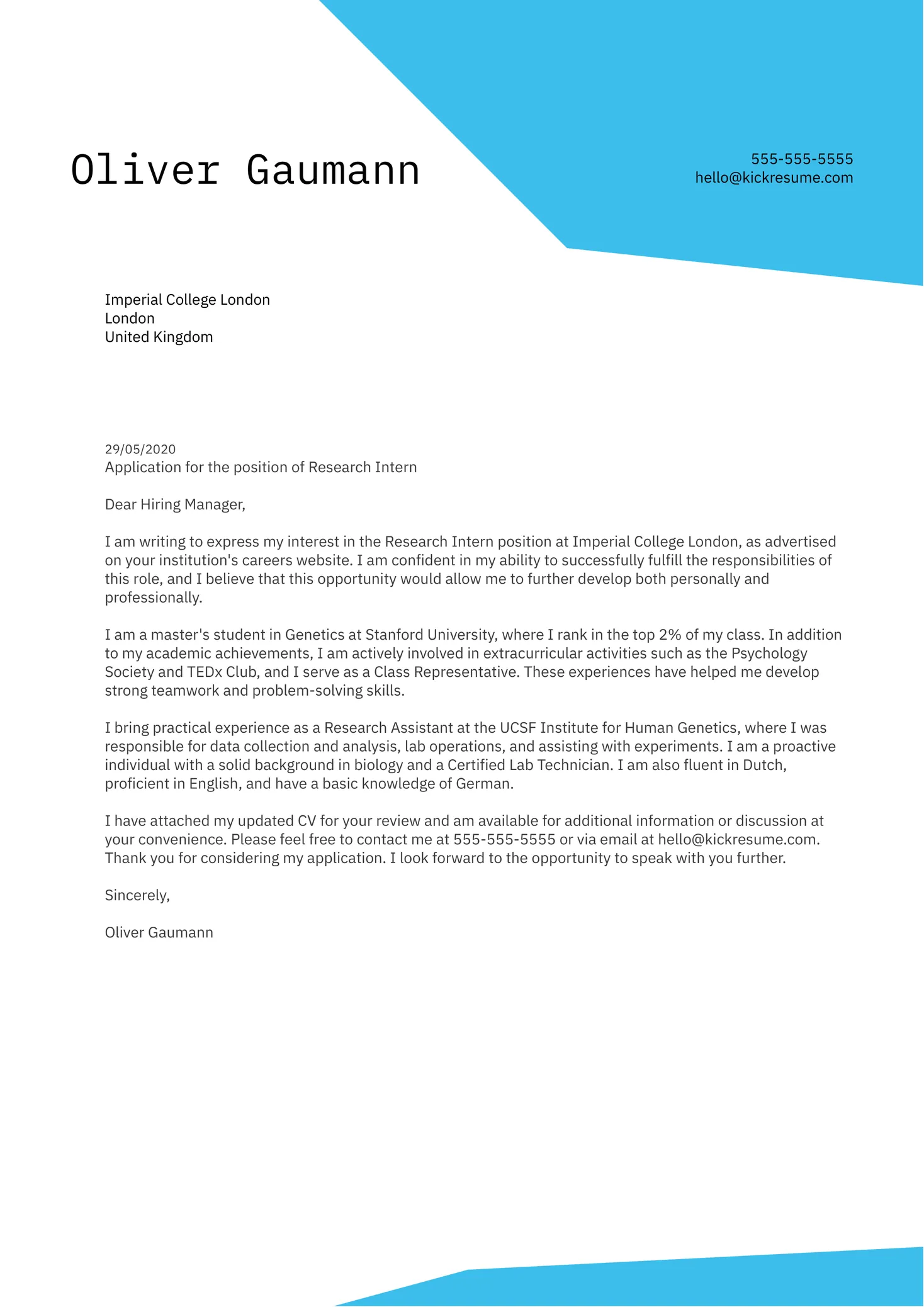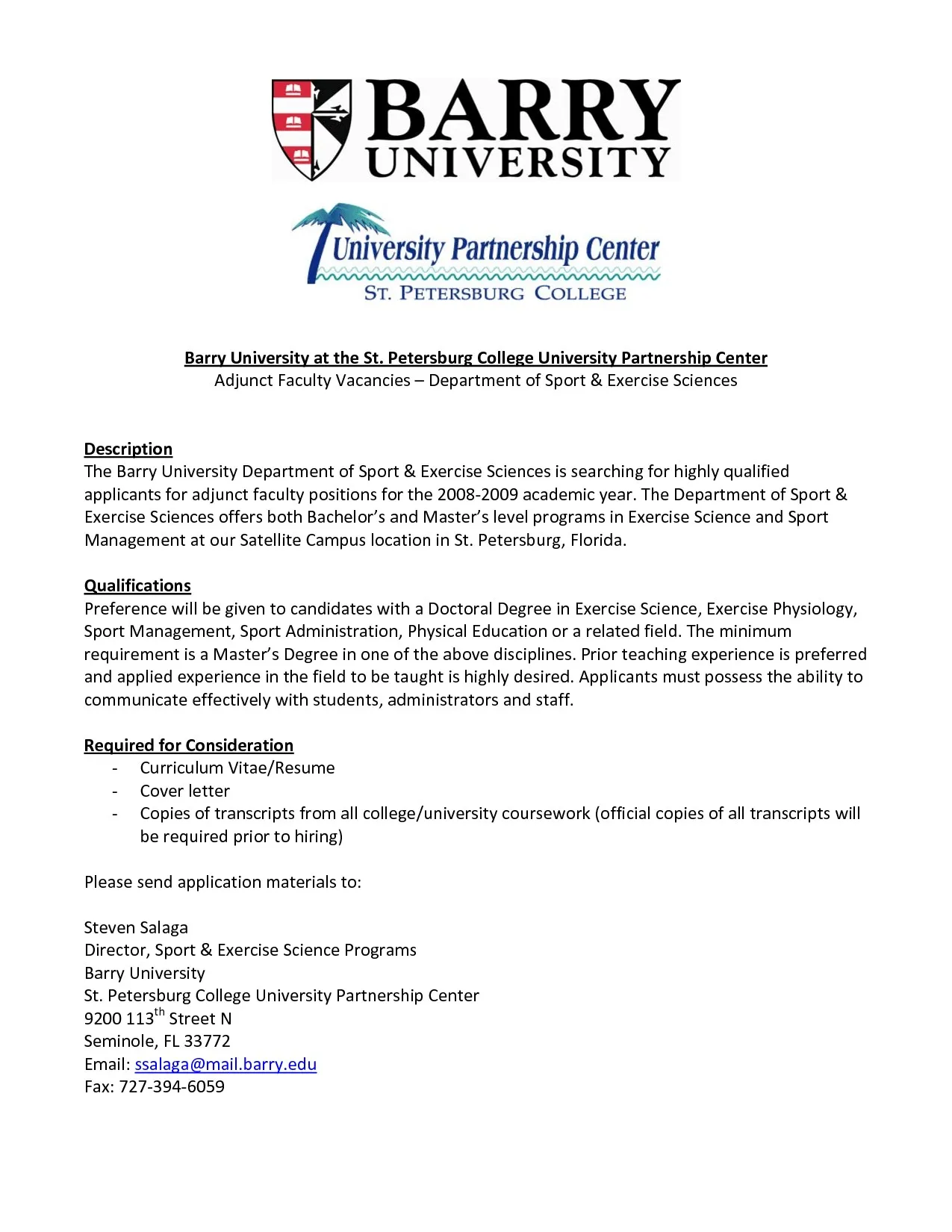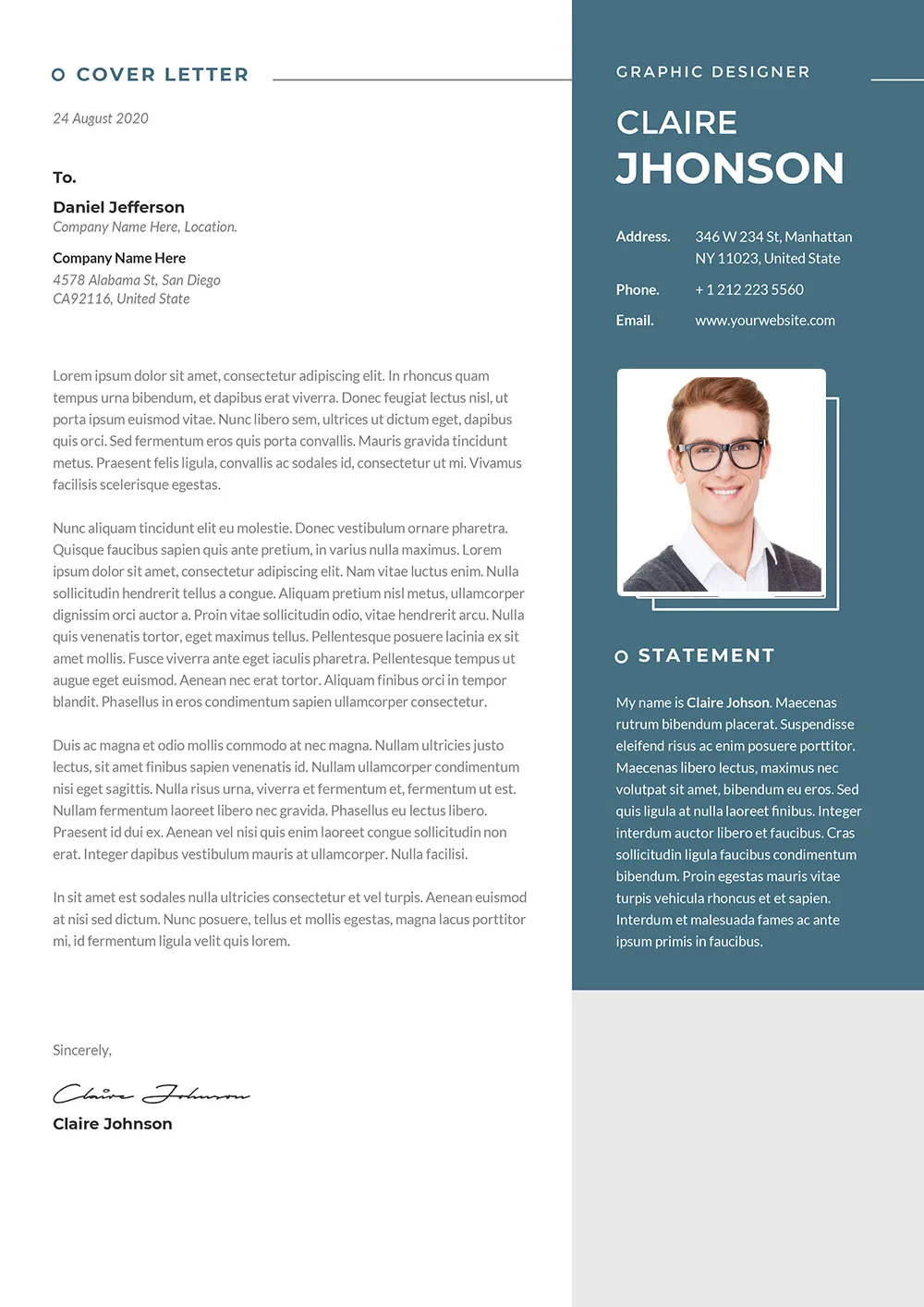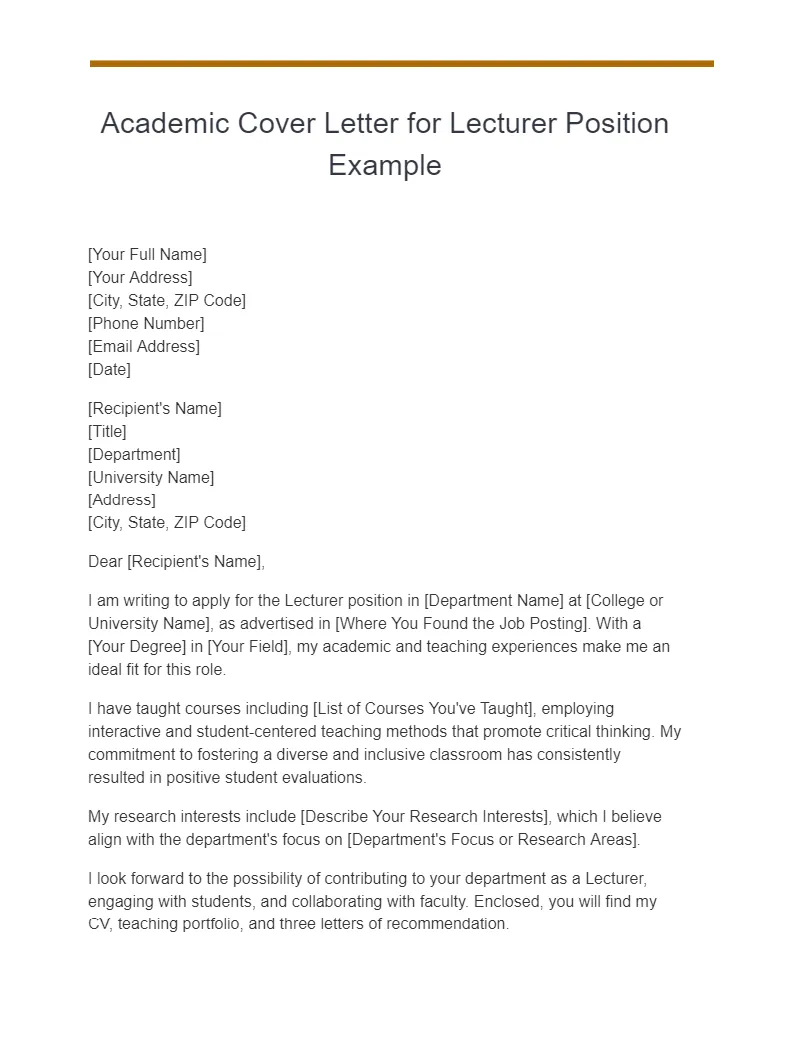Understanding the Academic Cover Letter’s Purpose
An academic cover letter serves a vital purpose in the competitive world of academia. It’s your initial introduction to a potential employer, a chance to make a strong first impression, and an opportunity to showcase your qualifications beyond your resume. Unlike a standard resume, a cover letter allows you to provide context, demonstrate your personality, and explain why you are the ideal candidate for the specific position. It’s not merely a summary of your experiences; it’s a persuasive narrative that highlights your achievements, aligns your skills with the job requirements, and expresses your enthusiasm for the opportunity. A well-crafted cover letter grabs the attention of the hiring committee, demonstrating your genuine interest and potential fit within the department and university culture. It’s a crucial component for securing an interview and ultimately, the job. It’s also a chance to show how your research aligns with the department’s goals and why you are uniquely suited for the role.
The Key Components of a Strong Academic Cover Letter
A compelling academic cover letter consists of several essential components, each playing a crucial role in conveying your suitability for the position. Begin with a professional salutation, addressing the hiring committee or the specific individual if known. Your opening paragraph should immediately grab attention by stating the position you’re applying for and expressing your enthusiasm. The body of your letter should then delve into your qualifications, highlighting your research experience, teaching abilities, and relevant skills. Provide concrete examples of your accomplishments, quantifying your achievements whenever possible. Clearly articulate how your research interests align with the department’s focus and how you can contribute to its goals. Conclude with a strong closing paragraph that reiterates your interest, summarizes your key strengths, and expresses your anticipation for an interview. Remember to maintain a formal tone, use clear and concise language, and proofread meticulously for any errors. Make sure to include your contact information so that they can easily reach you.
Highlighting Your Research Achievements

In academic cover letters, emphasizing your research achievements is crucial. This section should showcase your scholarly work and demonstrate your potential as a researcher. Start by clearly stating your research interests and how they align with the department’s needs. Provide specific examples of your publications, presentations, and grants. When describing your research, use language that is accessible to a broad audience while also conveying your expertise. Quantify your achievements whenever possible, such as by mentioning the impact factor of journals where you’ve published or the number of citations your work has received. Highlight any significant findings or breakthroughs you’ve made, emphasizing their importance and potential impact. Demonstrate your ability to work independently and as part of a team, highlighting your collaborations and contributions. Conclude this section by reiterating your commitment to research and your eagerness to contribute to the department’s research endeavors. It is important that this section is not too long, but detailed enough to make an impact on the reviewer.
Demonstrating Teaching Experience and Philosophy
For many academic positions, teaching experience is equally as important as research. Your cover letter should clearly articulate your teaching experience, including the courses you’ve taught, the levels of students you’ve worked with, and any teaching methodologies you’ve employed. Provide concrete examples of your successful teaching practices, such as student evaluations, innovative assignments, or curriculum development efforts. Craft a brief teaching philosophy statement that outlines your approach to teaching, your goals for students, and your commitment to fostering a positive learning environment. Highlight any teaching awards or recognitions you’ve received. If you have limited teaching experience, emphasize your enthusiasm for teaching and your willingness to learn and grow as an educator. Mention any workshops, training programs, or mentoring experiences you’ve participated in to enhance your teaching skills. Demonstrating a strong commitment to teaching and a clear understanding of your role as an educator is very important in this section. The goal is to show the hiring committee that you are also fit to be an educator.
Tailoring Your Letter to the Specific Position
One of the most critical aspects of writing an effective academic cover letter is tailoring it to the specific position you’re applying for. Generic cover letters are easily identified and often discarded. Before you start writing, thoroughly research the department, the university, and the specific job requirements. Carefully review the job description, and identify the key skills, experiences, and qualifications the hiring committee is seeking. In your cover letter, explicitly address these requirements, providing evidence of how your skills and experiences align with their needs. Use the same keywords and phrases as those used in the job description, but don’t simply regurgitate the description. Instead, weave those keywords naturally into your narrative, demonstrating your understanding of the position and your ability to meet its demands. Highlight any specific projects or initiatives that you would like to be a part of, and explain how your research interests and teaching philosophy align with the department’s vision and goals. Make sure your letter reflects your genuine interest in the position and the institution, showing that you have taken the time to understand its culture and values.
Showcasing Your Skills and Qualifications

Effectively showcasing your skills and qualifications is at the heart of an academic cover letter. While your resume provides a comprehensive list, your cover letter is where you demonstrate how those skills make you an ideal candidate. Focus on the skills most relevant to the position, providing concrete examples of how you’ve utilized them in your research, teaching, and professional experiences. Quantify your achievements whenever possible, providing specific metrics to showcase your impact. Use action verbs to describe your accomplishments and responsibilities, demonstrating your proactive approach. For example, instead of saying “Responsible for managing a research project,” say “Managed a research project, resulting in X publications and Y grant funding.” Tailor your language to the specific requirements of the job description, demonstrating your understanding of the position’s needs. Furthermore, highlight any transferable skills, such as communication, leadership, problem-solving, and teamwork, which are essential in an academic environment. Use the STAR method (Situation, Task, Action, Result) to provide detailed examples of your skills in action, demonstrating how you’ve successfully tackled challenges and achieved positive outcomes.
Formatting and Presentation for Impact
The formatting and presentation of your academic cover letter can significantly impact its effectiveness. A well-formatted letter is easy to read, visually appealing, and demonstrates professionalism. Use a standard font, such as Times New Roman, Arial, or Calibri, and ensure a consistent font size (typically 11 or 12 points). Maintain one-inch margins on all sides and use single-spacing for the body of the letter, with a double space between paragraphs. The letter should be no more than two pages long, with clear and concise language. Use headings and subheadings to break up the text, making it easier to navigate and understand. Avoid using overly complex language or jargon, and ensure your writing is clear, concise, and engaging. Proofread your letter meticulously for any grammatical errors, spelling mistakes, or typos. Ensure your letter is properly aligned and presented in a professional format. Make sure the file is saved as a PDF, ensuring it maintains its format across different devices. A well-formatted cover letter shows attention to detail, which is a crucial attribute in academic positions.
Common Mistakes to Avoid in Your Cover Letter
Avoiding common mistakes is essential for crafting a cover letter that stands out for the right reasons. One of the biggest mistakes is using a generic or impersonal cover letter. Always tailor your letter to the specific position and institution. Another mistake is providing too much or too little information. Strike a balance by providing sufficient detail without overwhelming the reader. Avoid simply restating your resume; instead, use your cover letter to provide context and demonstrate your personality. Grammatical errors and typos can significantly undermine your credibility, so proofread your letter meticulously. Another common mistake is failing to address the specific requirements of the job description. Make sure your letter addresses each requirement and demonstrates how your skills and experiences align with the position. Avoid negative language or making excuses for any gaps in your resume. Instead, focus on your strengths and achievements. Ensure your letter is professional in tone and avoids any inappropriate language or informalities. Taking the time to avoid these pitfalls can greatly increase your chances of making a positive impression.
Proofreading and Editing for Perfection

The final step in creating an effective academic cover letter is rigorous proofreading and editing. After you’ve completed your draft, set it aside for a day or two and then revisit it with fresh eyes. Read your letter aloud to catch any awkward phrasing or grammatical errors. Pay close attention to sentence structure, ensuring your writing is clear, concise, and engaging. Check for any typos or spelling mistakes. Ask a trusted colleague, mentor, or friend to review your letter and provide feedback. They can catch errors you may have missed and offer suggestions for improvement. Ensure that your letter aligns with the job description and showcases your skills and qualifications effectively. Verify that all contact information is accurate and up-to-date. A well-proofread and edited cover letter demonstrates your attention to detail and professionalism, which are essential qualities for any academic position. Taking the time to refine your cover letter will significantly increase your chances of making a positive impression and securing an interview.
